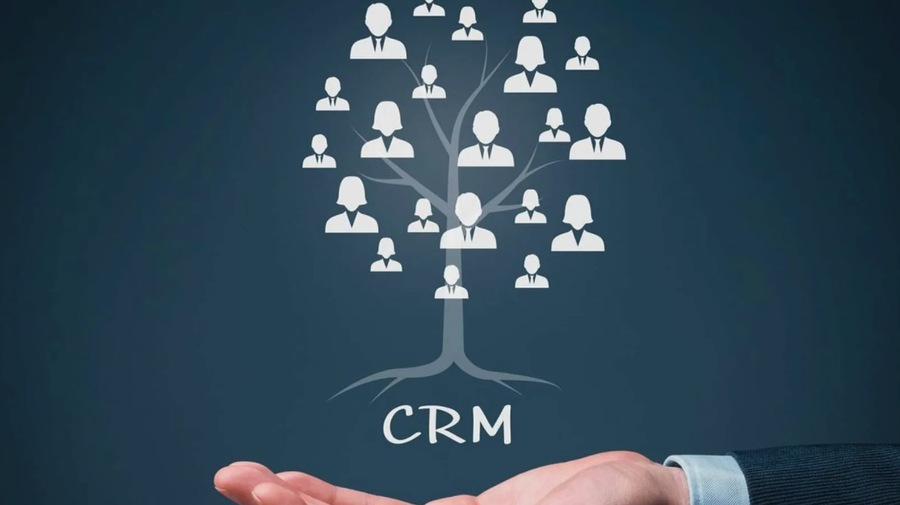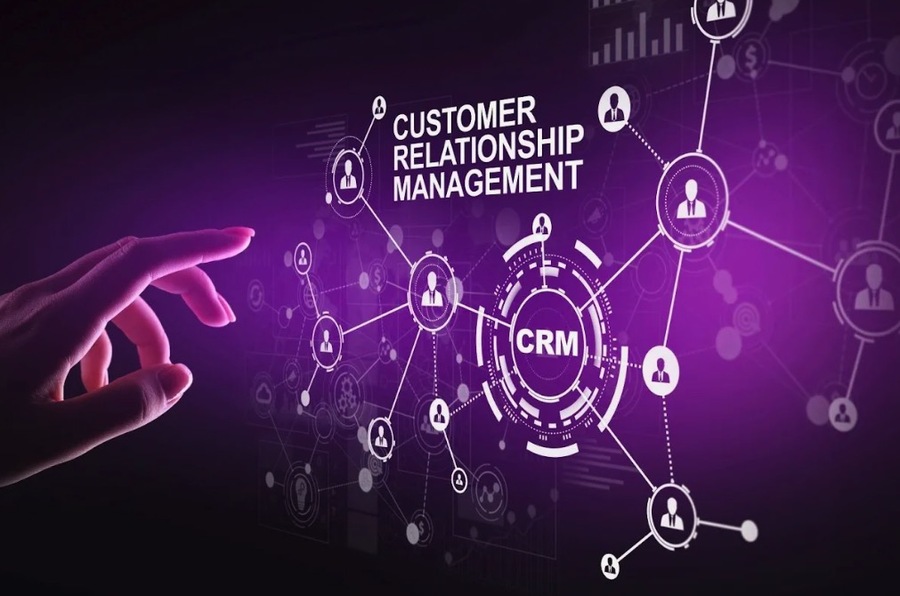Understanding CRM Systems: Evolution, Functionality, and Integration
A Customer Relationship Management (CRM) system is an advanced technological framework designed to manage a company’s interactions with current and potential customers comprehensively. The primary objective of a CRM system is to enhance business relationships with customers, fostering greater customer loyalty and retention, which ultimately drives sales growth. These systems enable businesses to organize, automate, and synchronize various customer-related processes, including sales, marketing, customer service, and technical support. CRM systems are particularly valuable for an IT service company, helping to streamline complex processes and improve service delivery. Initially, CRM systems appeared in 1947 as structured notepads, helping businesses keep track of customer interactions and improve service delivery.
Historical Development of CRM Systems
The evolution of CRM systems from simple notepads to sophisticated digital tools has been marked by significant technological advancements and shifts in business practices. In the late 1940s, businesses relied on structured notepads to manually record customer interactions, preferences, and contact details. These early systems were labor-intensive and prone to errors, but they laid the foundation for more sophisticated solutions.
The advent of computer technology in the 1980s and 1990s brought about a major transformation in CRM capabilities. Companies began using databases to store and manage customer information more efficiently. The real breakthrough came in the 1990s with Thomas Siebel, who created the first full-fledged CRM system, Siebel CRM. This system provided a more systematic and automated approach to managing customer relationships, incorporating features such as sales force automation, marketing automation, and customer service management. Siebel CRM’s innovation revolutionized the way businesses interacted with their customers, focusing on key objectives like increasing profits, reducing costs, identifying effective client interaction strategies, minimizing employee errors, and enhancing the speed and volume of sales.

Objectives of CRM Systems
CRM systems are implemented with several strategic objectives that drive their development and use:
Increasing Profits: By optimizing marketing strategies and improving customer loyalty, CRM systems help businesses maximize their revenue. They provide insights into customer behavior, allowing businesses to tailor their offerings and promotions to meet customer needs more effectively.
Reducing Costs: CRM systems streamline various business operations, leading to enhanced operational efficiency and significant cost reductions. Automation of routine tasks reduces the need for manual labor and minimizes errors.
Identifying Effective Strategies: CRM systems analyze customer data to develop effective communication strategies that enhance customer engagement and satisfaction. They help businesses identify the most successful methods for reaching and retaining customers.
Minimizing Employee Errors: Automation of key processes reduces the likelihood of human error, ensuring more accurate and reliable data management. This leads to improved customer service and satisfaction.
Increasing Sales Volumes and Processing Applications: CRM systems facilitate faster and more efficient handling of sales processes, boosting productivity and revenue. They enable businesses to manage leads, track sales activities, and close deals more effectively.
Functionality of Modern CRM Services
Modern CRM systems offer a wide array of functionalities that cater to various aspects of business operations, making them indispensable tools for organizations of all sizes:
Information Storage and Analysis: CRMs act as central repositories for storing and analyzing customer data. They provide businesses with comprehensive insights into customer behavior, preferences, and buying patterns, which can be used to develop targeted marketing campaigns and improve customer service.
Enterprise Activity Planning: CRM systems help plan and track all business activities related to customer interactions. They enable businesses to manage schedules, set reminders, and monitor progress, ensuring that all processes are aligned with the company’s objectives.
Multi-channel Application Acceptance: Modern CRMs can handle customer queries from multiple channels, including websites, telephone calls, SMS, email, and instant messengers. This ensures a seamless customer experience and allows businesses to respond to inquiries promptly and efficiently.
Comprehensive Customer Database Management: These systems maintain detailed records of the customer base, allowing businesses to access contact information and a complete history of orders and transactions at any time. This facilitates personalized customer service and helps businesses build stronger relationships with their clients.
Advantages of CRM Systems
Implementing a CRM system brings a multitude of benefits to a business, enhancing various aspects of operations and customer interactions:
Formation of Client Cards: Detailed profiles for each customer are created, facilitating personalized service. These profiles include information such as contact details, purchase history, preferences, and any previous interactions with the company.
History of Client Relationships: CRM systems track all previous customer interactions, providing valuable insights for future communications. This historical data helps businesses understand customer needs and anticipate future behaviors.
Analysis of Work: CRM systems analyze various aspects of business operations, providing insights into customer behavior and company performance. They generate reports and dashboards that help businesses make data-driven decisions.
Automation of Processes: Routine tasks are automated, reducing the workload on staff and increasing efficiency. This includes automating follow-up emails, scheduling appointments, and sending reminders.
Interchangeability of Employees: Standardized processes ensure that employee transitions do not disrupt customer service. New employees can quickly get up to speed with the help of detailed customer records and standardized procedures.
Integration with Other Services: CRMs can be linked with other digital tools, enhancing their functionality. This includes integrating with email marketing platforms, accounting software, and social media channels.
Reduction of Human Error: Automated data management significantly reduces errors associated with manual data handling. This leads to more accurate records and improved customer service.

Stages of CRM System Implementation
Implementing a CRM system involves several critical stages, each of which is essential for ensuring a successful deployment:
1. Collection of Detailed Data on Business Processes: Understanding the existing workflow and identifying areas for improvement. This involves mapping out all customer interaction points and determining how they can be streamlined.
2. Determining the Scope of Interaction with the Client Base: Establishing how the CRM will be used in daily business interactions. This includes defining the goals and objectives of the CRM implementation.
3. Drawing Up Technical Specifications: Customizing the CRM according to business needs. This involves specifying the features and functionalities required to meet the company’s objectives.
4. Determining the Type of Platform and Supplier: Selecting the appropriate CRM software and vendor. This includes evaluating different CRM solutions and choosing the one that best fits the company’s needs.
5. Implementation of the CRM: Setting up and integrating the CRM into the business. This involves configuring the system, migrating data, and testing the setup to ensure it meets the company’s requirements.
6. Training of Specialists: Ensuring that all relevant staff are trained to use the CRM effectively. This includes conducting training sessions and providing ongoing support.
7. Updating Data and Improving Processes: Continuous improvement and data updating to maximize the CRM’s efficacy. This involves regularly reviewing and refining CRM processes to ensure they remain aligned with business goals.
Integration of CRM with Facebook Messenger
Integrating CRM systems with communication platforms like Facebook Messenger can significantly enhance customer interaction by providing continuous, personalized communication. The key advantages of this integration include:
Uninterrupted Communication: Ensures all customer inquiries are addressed promptly, without any lapses. This enhances customer satisfaction and loyalty.
Personalized Interaction with Clients: Businesses can tailor their communication based on detailed customer profiles stored in the CRM. This leads to more relevant and engaging interactions.
Automation and Efficiency: Streamlines response processes, enhancing the efficiency and effectiveness of customer service operations. Automated responses can handle common inquiries, freeing up staff to focus on more complex issues.
Conclusion
CRM systems have transformed from simple manual notepads to sophisticated, multi-functional software solutions that manage extensive customer data and automate complex business processes. Their ability to integrate with social media platforms like Facebook Messenger further elevates their utility, solidifying their role as indispensable tools for modern businesses aiming to excel in customer service and drive sales growth. As technology advances, CRM systems will continue to evolve, offering even more integrated services and enhancing global connectivity. The transformation of CRMs from basic organizational tools to comprehensive business management systems reflects their central role in modern business operations and customer relationship management. By implementing and effectively utilizing CRM systems, businesses can achieve greater efficiency, improved customer satisfaction, and enhanced profitability.
